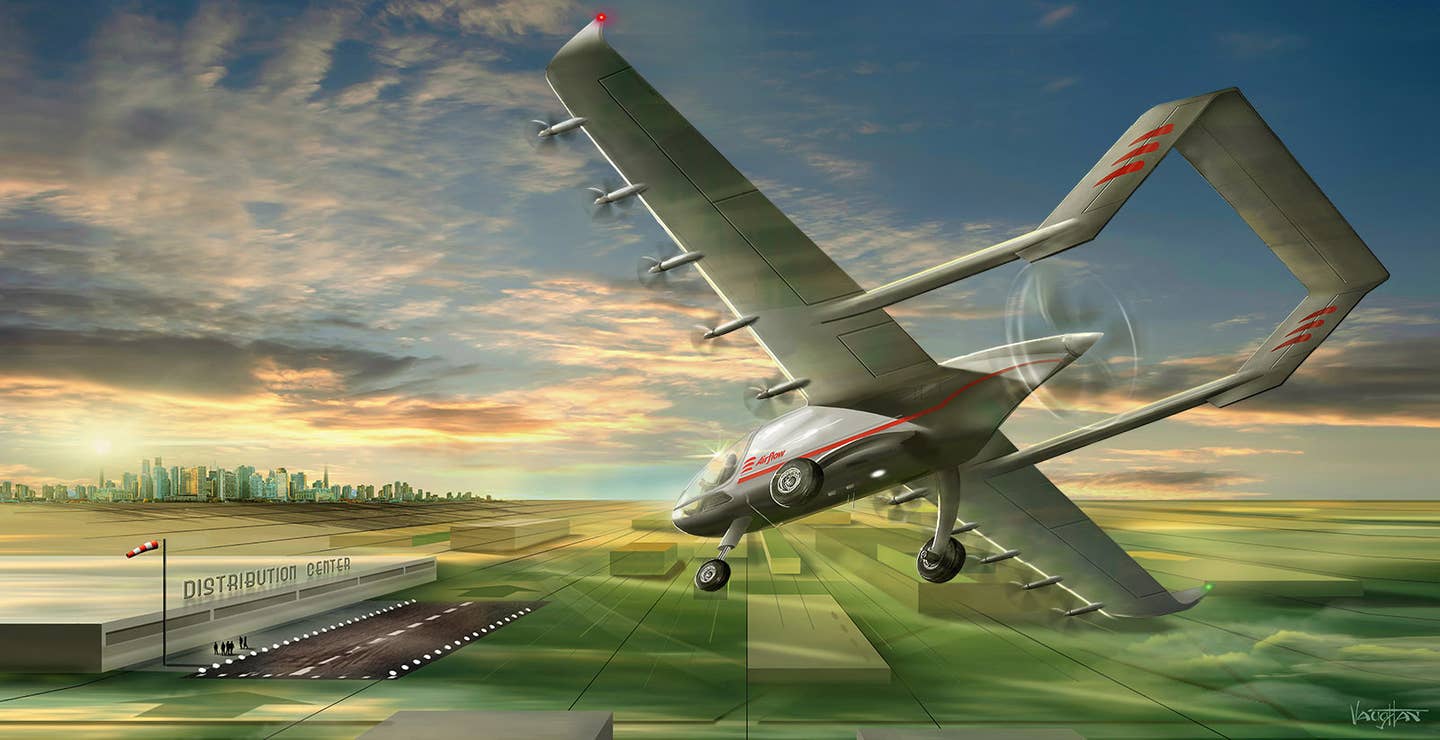Airflow Unveils eSTOL Cargo Concept
Urban Air Mobility (UAM) startup Airflow introduced its new electric short takeoff and landing (eSTOL) cargo vehicle concept on Wednesday. According to the company, the unnamed fixed-wing aircraft will require…

Image: Airflow
Urban Air Mobility (UAM) startup Airflow introduced its new electric short takeoff and landing (eSTOL) cargo vehicle concept on Wednesday. According to the company, the unnamed fixed-wing aircraft will require less than 150 feet to take off and land and will be capable of carrying up to 500 pounds of cargo. The single-pilot eSTOL is aimed at the middle-mile logistics market and is expected to have a range of 250 miles plus reserves.
“The demand for same-day e-commerce continues to rise, and we’re building a new low-cost aerial capability to enable that growth,” said Airflow co-founder and CEO Marc Ausman. “Our approach from the beginning is to focus on a simple aircraft design with well-defined new technology. In doing so, the team believes development and certification costs will be approximately $200MM versus more than $700MM for an eVTOL aircraft, making for more efficient use of capital.”
Airflow says it intends to pursue certification for its eSTOL aircraft under Part 23 regulations. The company is targeting 2025 for the start of production. Based in California, Airflow was founded in 2019 by a group of five former members of Airbus’ Vahana eVTOL team.






